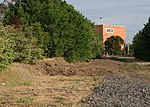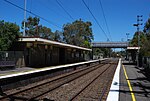Kew Lunatic Asylum is a decommissioned psychiatric hospital located between Princess Street and Yarra Boulevard in Kew, a suburb of Melbourne, Australia. Operational from 1871 to 1988, Kew was one of the largest asylums ever built in Australia. Later known as Willsmere, the complex of buildings were constructed between 1864 and 1872 to the design of architects G.W. Vivian and Frederick Kawerau of the Victorian Public Works Office to house the growing number of "lunatics", "inebriates", and "idiots" in the Colony of Victoria.The first purpose built asylum in the Colony of Victoria, Kew was also larger and more expensive than its sister asylums at Ararat and Beechworth. The asylum's buildings are typical examples of the Italianate architecture style which was popular in Victorian Melbourne. Designed to be elegant, beautiful, yet substantial, and to be viewed as "a magnificent asylum for the insane" with the aim of portraying Melbourne as a civilised and benevolent city whilst avoiding the jail-like appearance of other asylums. These aims were furthered by the use of low ha-ha walls and extensively landscaped grounds. Long considered of cultural and historic significance to Melbourne, Kew Asylum and its complex of buildings were registered on the Register of the National Estate in March 1978.Despite initial grand plans and ideals, Kew Asylum had a difficult and chequered history, contributing to several inquiries throughout its 117 years of operation, including a Royal Commission. Overcrowding, mismanagement, lack of resources, poor sanitation and diseases were common criticisms during the asylum's first five decades; out-dated facilities and institutionalisation were criticisms of Kew's later period.
Kew continued to operate throughout the 20th century as a "hospital for the insane", "mental hospital", or "psychiatric hospital", treating acute, long-term and geriatric patients until it closed in December 1988. The main building and surrounding grounds were sold by the State Government in the 1980s and were redeveloped as residential properties.









